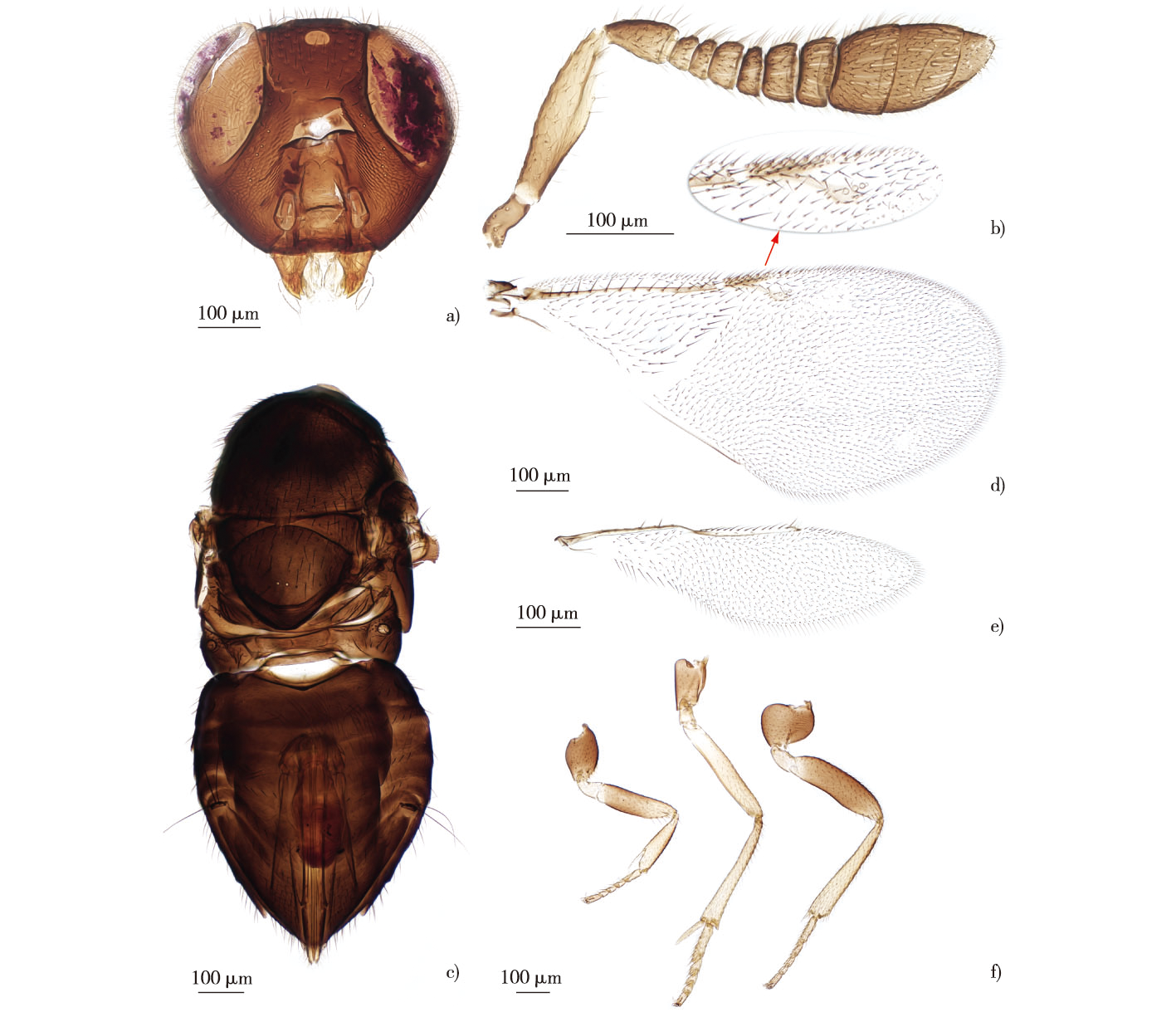【Objective】This study aimed to further enrich the biodiversity of Tianjin and China, and lay a foundation for the phylogenetic study of Encyrtidae species.【Method】The collection of Encyrtidae wasps was carried out in the east campus of Tianjin Agricultural University; the specimens were collected using a Malaise trap and stored in collection bottles containing absolute ethanol. After bringing the collected insect specimens back to the laboratory, the Encyrtidae wasps were sorted out according to their morphological characteristics under a stereomicroscope; the target wasps were dissected, and after becoming transparent in 5% (volume fraction) NaOH, the dissected head, thorax, gaster, antenna, fore wing, hind wing, fore leg, mid leg, and hind leg were successively mounted in Arabian gum on slides. Each characteristic part was photographed and measured under a stereomicroscope with a graduated eyepiece. Finally, the wasps were classified and identified according to their morphological characteristics.【Result】This study found a newly recorded species of the genus Exoristobia in China. The length of the females varies from 1.10-1.42 mm, body was generally dark brown, wings hyaline, basal and distal of fore coxa yellowish brown, mid femora also yellowish brown, mid coxa brown, all tarsi yellowish brown, head 0.83× as high as wide in frontal view, frontovertex 0.37× head width in dorsal view, with distinct piliferous punctures, antenna scape 4× as long as broad and broadest in the middle, all funicle segments broader than long, clava three-segmented, as long as all funicular segments combined, apex distinct obliquely truncate, mandible with three teeth, the rear tooth round and blunt, thorax densely covered with setae, mesoscutum with fine, scale-like sculpture, scutellum with reticulate sculpture, fore wing 2× as long as wide, linea calva open posteriorly, uninterrupted, length of mid tibial spur one-third of the mid tibia and slightly shorter than the corresponding basitarsus, abdomen heart-shaped, with the ovipositor slightly extended. The photos of female adults and the key to known Chinese species of Exoristobia were also provided. 【Conclusion】The appraisal confirmed that the specimen examined, Exoristobia dipterae (Risbec, 1951), was a newly recorded species in China.
 PDF(2232 KB)
PDF(2232 KB)


 PDF(2232 KB)
PDF(2232 KB)
 PDF(2232 KB)
PDF(2232 KB)
